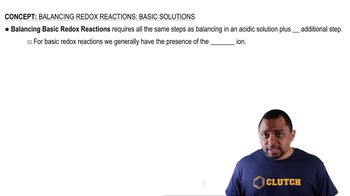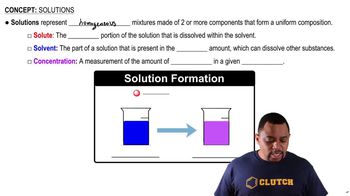Here are the essential concepts you must grasp in order to answer the question correctly.
Balancing Redox Reactions
Balancing redox reactions involves ensuring that both mass and charge are conserved. In acidic solutions, this typically requires the use of half-reactions, where oxidation and reduction processes are balanced separately before combining them. The coefficients in front of each species indicate the number of moles involved in the reaction, which must be adjusted to achieve balance.
Recommended video:
Balancing Basic Redox Reactions
Oxidation States
Oxidation states are a way to keep track of electrons in chemical reactions. Each element in a compound is assigned a specific oxidation state based on its electron configuration and bonding. Understanding the changes in oxidation states during the reaction is crucial for identifying which species are oxidized and reduced, which directly influences the coefficients used in balancing the equation.
Recommended video:
Acidic Solution Conditions
In an acidic solution, the presence of hydrogen ions (H⁺) affects the balancing of redox reactions. When balancing in acidic conditions, additional H⁺ ions and water molecules may be added to the half-reactions to ensure that both mass and charge are balanced. This is particularly important when determining the coefficients for species like Sn²⁺ in the overall balanced equation.
Recommended video:




